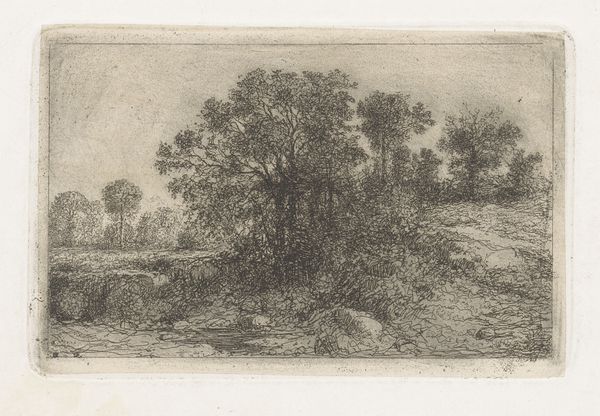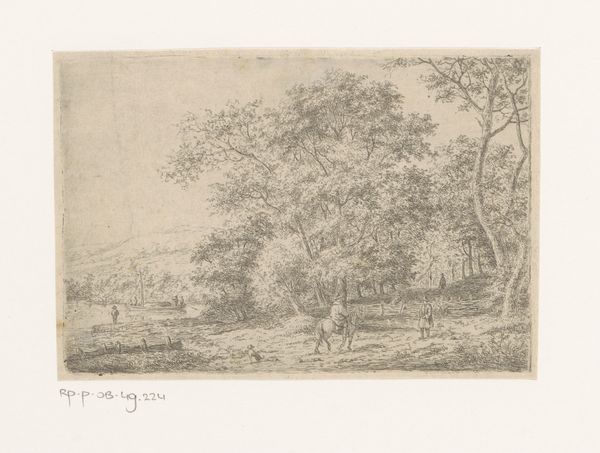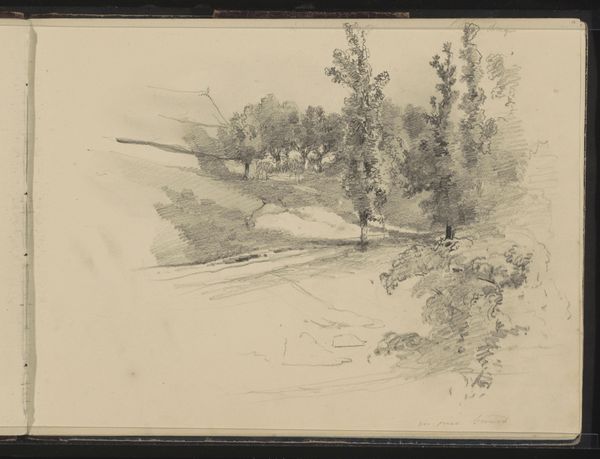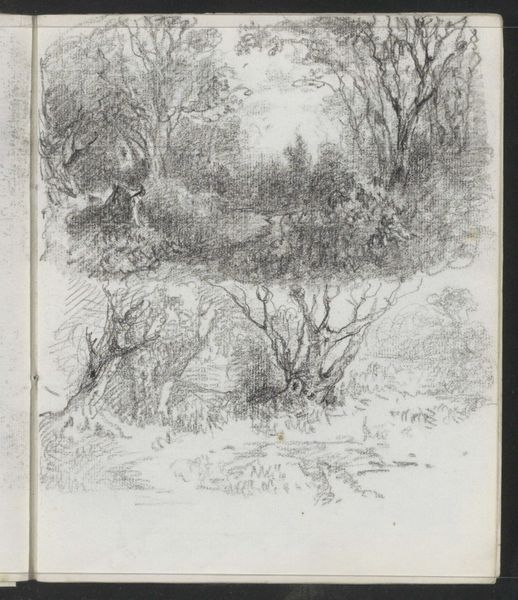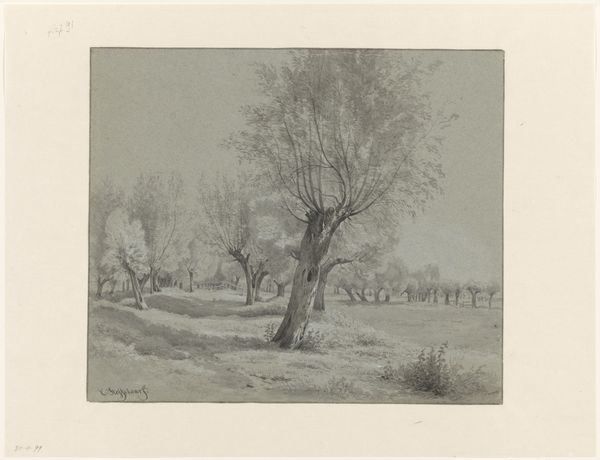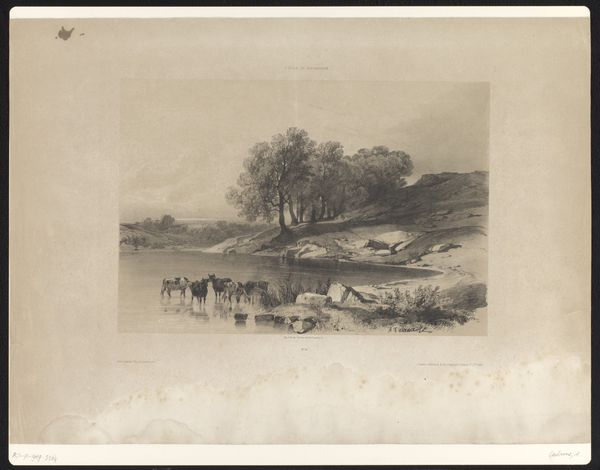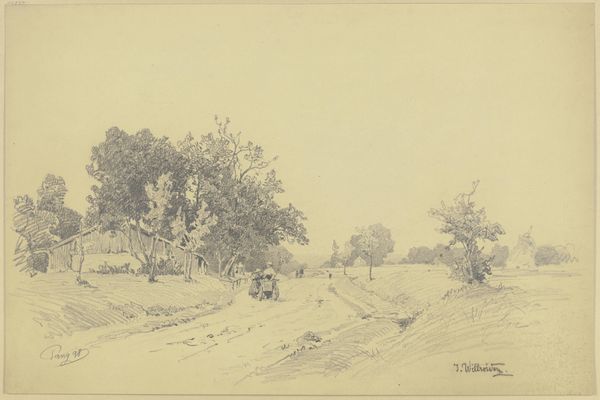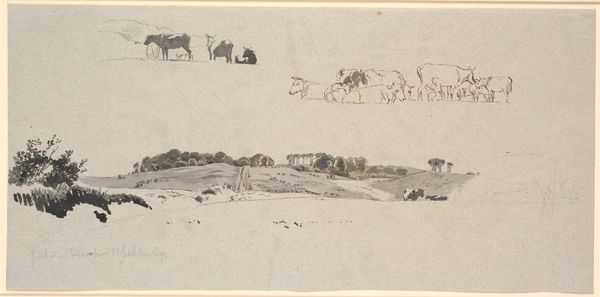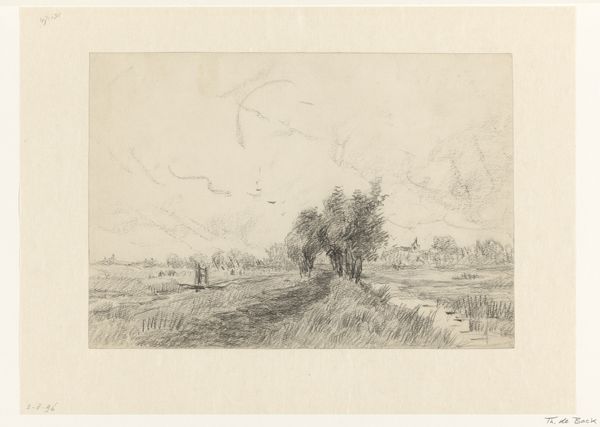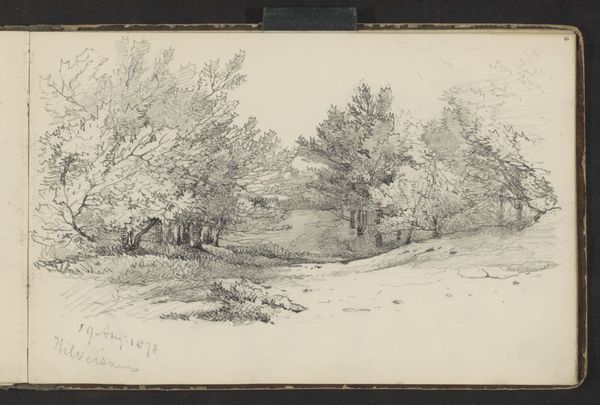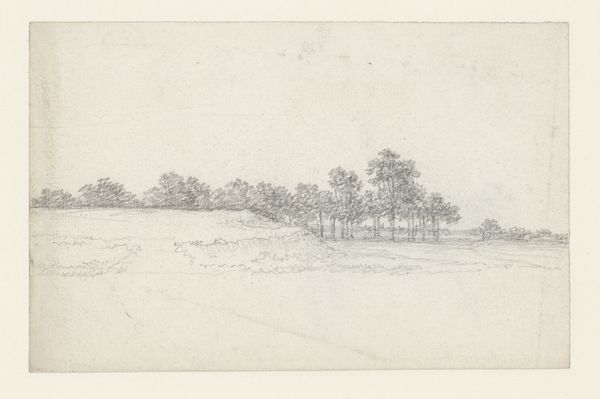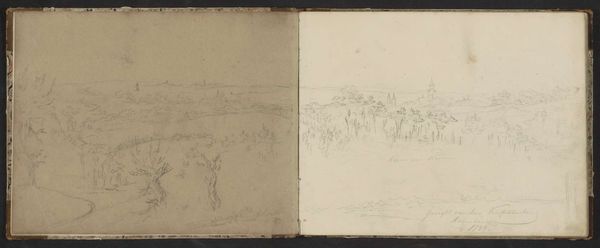
Panorama of the Charles River June 22 '86 (from Sketchbook VII) 1886
0:00
0:00
Dimensions: 5 x 7 1/2 in. (12.7 x 19.1 cm)
Copyright: Public Domain
Curator: Before us, we have William Trost Richards' pencil drawing, "Panorama of the Charles River June 22 '86" dating back to 1886, currently residing at the Metropolitan Museum of Art. Editor: My first impression is that of a quiet observation, almost a reverie captured with remarkable restraint. There is a palpable sense of stillness and serenity. The delicate rendering certainly lends to that feeling. Curator: Indeed. As a 'plein-air' study from one of Richard's sketchbooks, we must consider it through the lens of 19th-century artistic production. This was not necessarily intended as a finished "work" in the traditional sense, but rather, a vital step in the creation of larger, more formally exhibited landscapes. Note how it reflects an engagement with both the location, the Charles River, and the practice of creating “on location.” Editor: And if you study the work purely as an aesthetic object, you can certainly find delight in the gradations of tone, the balance between light and shadow, the careful compositional strategy, with lines leading the eye through each open sketchbook page. The artist really demonstrates keen attention to surface texture in terms of reflecting the atmospheric perspective here. Curator: The labor is implicit—a daily activity of the late 19th century landscape painter deeply immersed in representing an actual site for later recomposition. Also note that the very 'panoramic' structure—the conjoined sketch book pages themselves—draw our attention to the constructed, curated act of "seeing." Editor: The materiality, however, offers a compelling contrast, doesn't it? Pencil on paper offers an almost intimate and unfiltered artistic impression. There is a vulnerability in these sketches which stands in stark contrast to the final oils and watercolors presented by many of the Hudson River School artists to which he is connected. The artist appears as an open-hearted instrument. Curator: Ultimately, I am drawn to this pencil work because of its direct relation to place. Its historical specificity and relation to the working life of this artist in service to making a painting. Editor: I appreciate Richards' control of form, using such subtle means. It really shows how one’s engagement with light and shadow has more power than even the most technically wondrous artwork.
Comments
No comments
Be the first to comment and join the conversation on the ultimate creative platform.
